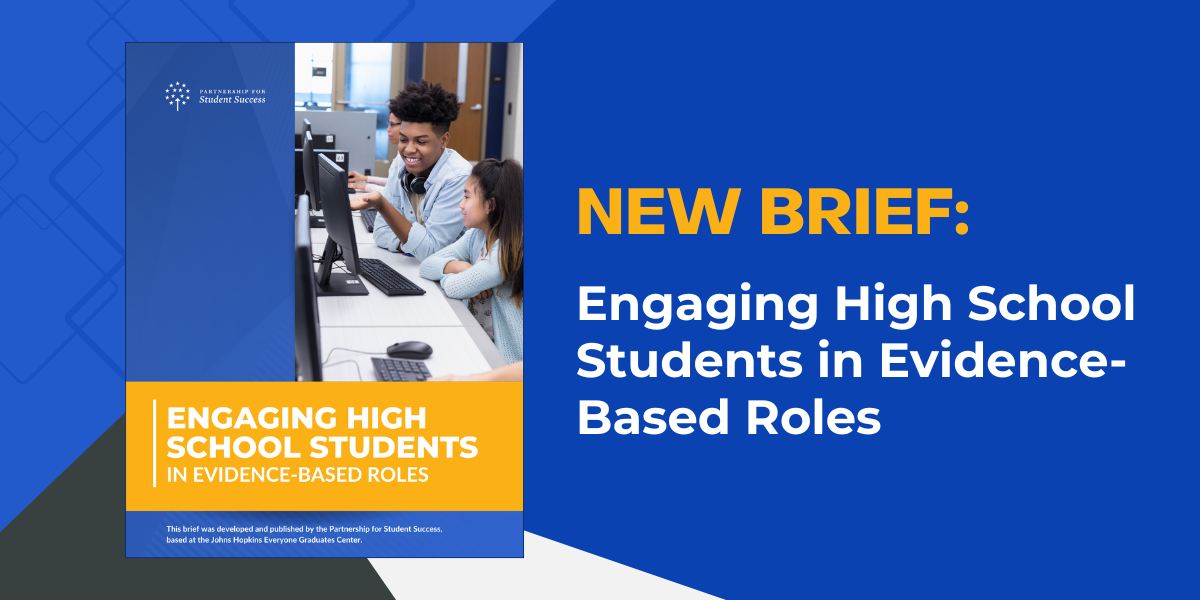Engaging High School Students in Evidence-Based Roles
Special thanks to Read Alliance & Los Angeles Trust for Children’s Health for their contributions and feedback on this brief.
High school students have immense potential not only to shape their own futures, but also to positively influence the academic, social, and emotional outcomes of their peers. As schools and communities seek innovative and sustainable strategies to address persistent challenges such as learning gaps, post-secondary readiness, and student well-being, engaging high school students in structured, evidence-based support roles—such as academic tutors, mentors, and post-secondary transition coaches—offers a powerful and underutilized solution.
This brief from the Partnership for Student Success at the Johns Hopkins University Everyone Graduates Center highlights several models for how high school students can be meaningfully involved in support roles that foster success for both those giving and receiving support. Drawing on examples from across the country, we share five essential strategies to implement and sustain effective peer programming.
In addition to providing practical strategies, this brief includes real-world examples from the field that illustrate how schools and nonprofit organizations are successfully engaging high school students in roles supporting other K-12 students. The brief also offers some high-level suggestions to help schools, districts, and community-based organizations take the first steps toward designing and implementing peer-to-peer or near-peer models.
Reference to any non-U.S. government organization, event or product does not constitute an endorsement, recommendation or favoring of that organization, event or product and is strictly for the information and convenience of the public.
This website is developed and maintained by the Everyone Graduates Center at Johns Hopkins University for the National Partnership for Student Success.
It follows the website privacy policy found here. View the website’s accessibility statement here.

